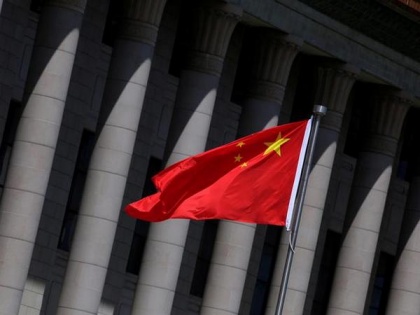How China is using infrastructure as 'tool' of its expansionist intentions
By ANI | Published: June 20, 2023 07:40 PM2023-06-20T19:40:10+5:302023-06-20T19:45:21+5:30
Beijing [China], June 20 : Beijing is using infrastructure and connectivity as its tools to somehow enmesh Tibet and ...

How China is using infrastructure as 'tool' of its expansionist intentions
Beijing [China], June 20 : Beijing is using infrastructure and connectivity as its tools to somehow enmesh Tibet and Xinjiang - the two autonomous regions into its fabric and link them with the rest of China.
One of the most visible elements of China's infrastructure investments in Tibet and Xinjiang has been the construction and upgradation of airports and heliports. It offers PLA additional platforms to launch airborne surveillance and reconnaissance missions, as well as strikes and counterstrikes in case of conflicts, a platform named China Power reported.
Citing satellite imagery and other open-source material, China Power has identified 37 airports and heliports within Tibet and Xinjiang that have been newly constructed or upgraded since 2017. At least 22 of these are identifiable as military or dual-use facilities or are expected to be once they are completed.
Since 2017, China has initiated upgrades (such as new terminals, hangars, aprons, and runways) at all five of Tibet's existing airports. All five of these airports are military and civilian dual-use facilities.
Similar developments are taking place in Xinjiang as well. At least 15 airports have been upgraded in Xinjiang since 2017, with seven of these being military or dual-use facilities.
However, China still faces certain difficulties owing to the fact that much of China's side of the border is situated on the highest portions of the Tibetan Plateau
According to China Power, the PLA faces major operational challenges associated with operating at such high altitudes. The thinner atmosphere makes it more difficult for aircraft to take off.
China is coupling its expansion of air infrastructure in Tibet and Xinjiang with new roads, rail, and other ground transportation infrastructure.
"Beijing hopes that by enhancing connectivity within the regionsand better linking them with the rest of Chinait can enmesh the two autonomous regions more securely into China's social and economic fabric," the report stated.
Tibet and Xinjiang have historically lagged in most other parts of China in terms of overall economic development, but especially infrastructure.
According to official figures, Tibet's highway system grew 51 per cent between 2015 and 2020from 7,840 km to 11,820 kmfaster than the growth rate of any other province, region, or municipality. Xinjiang's network of highways has expanded at a fast clip as well, growing from 17,830 km in 2015 to 20,920 km in 2020, China Power reported.
However, many of the new roads and highways being built are connecting major regional hubs to remote areas on China's borders. In western Xinjiang, for example, China is constructing at least eight roads stretching from the major G219 national highway toward the China-India LAC.
China's national economic blueprint for 2021-2025, the 14th Five Year Plan, also laid out a goal of strengthening the construction of 'strategic backbone corridors' out of Xinjiang and into Tibet.
Shigatse Peace Airport, situated in a valley approximately 155 km north of the China-India border is an important PLAAF base at the dual-use Shigatse Peace Airport. At the existing portion of the airport, to the east, there is a large military presence, and several new upgrades have also been made. At the main military terminal and tarmac, 10 probable J-11 multirole fighter jets are present.
Nyingchi Mainling Airport, which is situated approximately 490 km east of Shigatse Peace Airport lies another major hub of Chinese military power. This site, centred on Nyingchi Mainling Airport, is located just 15 km from China's border with the Indian state of Arunachal Pradesh.
Immediately adjacent to the new garrison facility, the PLA has constructed a large new motor vehicle maintenance and storage facility, as well as a new complex for training troops. The training facility includes bunkers, trenches, bridges, and various obstacles for practising manoeuvres on foot and in vehicles.
In addition to these upgrades, a large SAM base had been constructed on a nearby ledge sitting approximately 50 meters above the surrounding facilities.
These examples show how behind the rapid infrastructural focus, lies the Chinese intentions of bring the autonomous regions into its expansionist fold.
Disclaimer: This post has been auto-published from an agency feed without any modifications to the text and has not been reviewed by an editor
Open in app